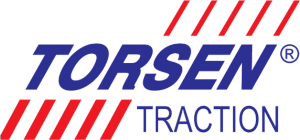Today’s Ask Torsen question comes to us by email from James Stapleton. He asks:
(I) Have seen where you’ve stated that a T-2 might be better suited for open tracking than the T-2R. I do both open track and autocross currently on Michelin Pilot Super Sport tires, and maybe changing to a 200 treadwear type tire in the near future. Thoughts?
Well James, that’s a great question – and one we’ve been asked a lot over the years. However, it is highly dependent on a number of things: chassis set up, track conditions and degree of technicality, even driver preference, so there is no singular hard and fast answer. The basic essence of the answer, though, is that it’s a matter of what trade-off is best for the situation in question.
As a limited slip differential becomes more aggressive – with a greater degree of lockup (or torque bias ratio) – it has greater resistance to differentiation. This has two influences on the car in the context of what we’re talking about here. First, it affords better resistance to wheel spin, which of course means that the driver can apply more throttle and accelerate faster. Second, it has greater resistance to steer input, at least during turn-in and initial corner exit, because by resisting differentiation, it is also resisting the car’s need to rotate and change direction.
This initial understeer is somewhat mitigated, at corner exit, by resisting inside wheelspin. In so doing, more torque is allowed to go to the outside tire once the inside tire reaches its traction limit than would otherwise be the case. That, in turn, has the effect of generating an understeer-canceling yaw moment on the chassis, serving to actually drive out of the corner with greater authority. But you have to overcome initial understeer to get to that point. This effect is described in more detail elsewhere on this blog.
To boil that all down to the nuts and bolts of the matter, higher TBR can make the car “push” some in a corner, but allows a great deal of corner-exit traction. Lower TBR, on the other hand, can be more neutral-feeling, but potentially lack sufficient traction to prevent inside spin. So, as with any aspect of chassis set-up, it’s a trade-off. Cars with lower torque output (such as a Miata or BRZ) can be comfortable with a lower TBR because they favor nimble response and don’t have the torque to overwhelm the tires. Big-bore cars with big torque output may need the higher TBR of a T-2R model.
However, as noted above, venue plays into it as well. A track that is fast and flowing will probably favor the lower TBR of the standard Type-2. With less dynamic weight transfer in a corner, you don’t need to compromise handling balance based on corner-exit traction. The lower dynamic weight transfer means the inside tire doesn’t become unloaded and loose traction as readily. But a smaller, more technical course – especially in autocross – may force you into a more aggressive differential due to tight corners and high weight transfer. There is a much greater potential to lift an inside tire off the pavement. Frankly, the T-2R owes its existence to autocross. It was due to the complaints of wheelspin and Type-2 not being aggressive enough in that environment that we created the T-2R product line. But again, it comes down to what compromise makes most sense to you.
In your specific case, because you participate in both open track events and autocross, I would probably prefer using the T-2R. It is easier to make some chassis tweaks to compensate for a little extra initial understeer than it is to cope with insufficient traction at corner exit. At least, that would be the approach I would take. Best of luck!
